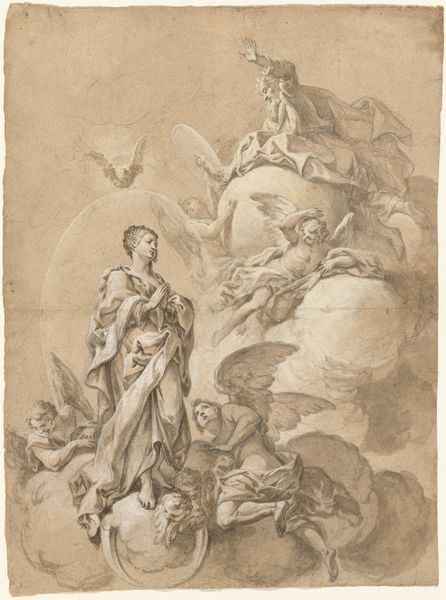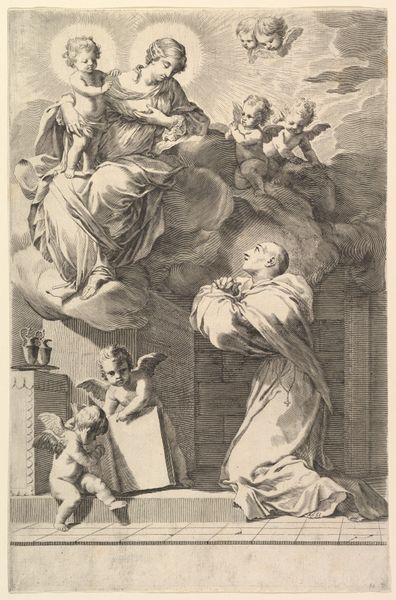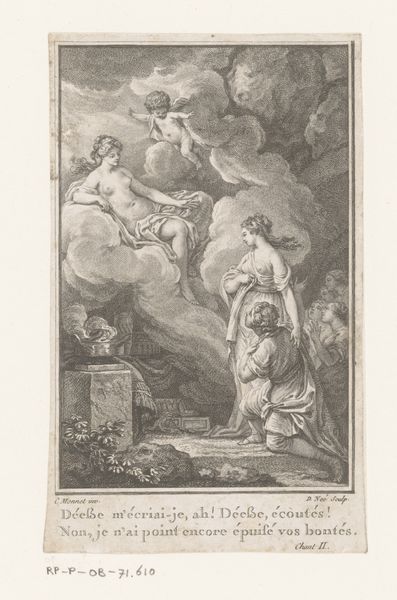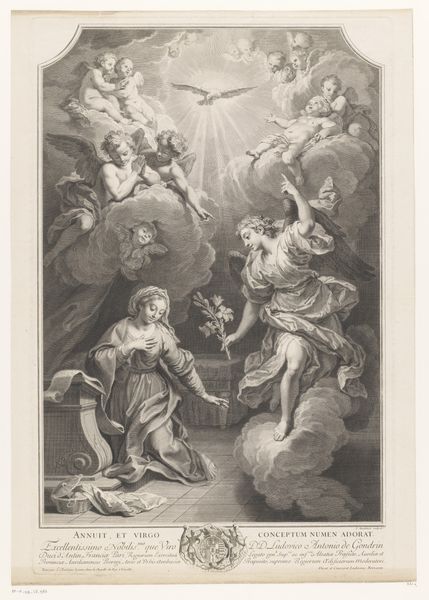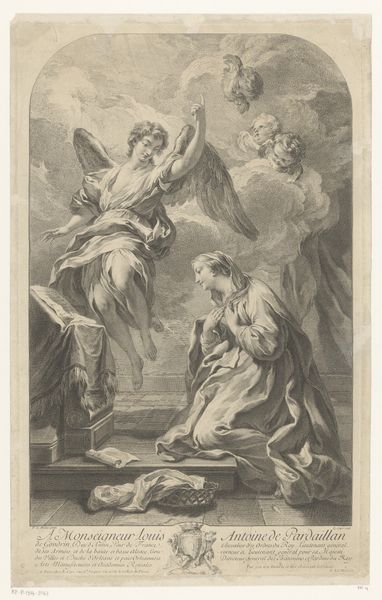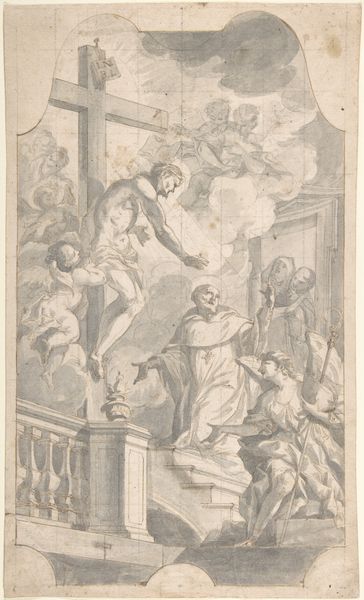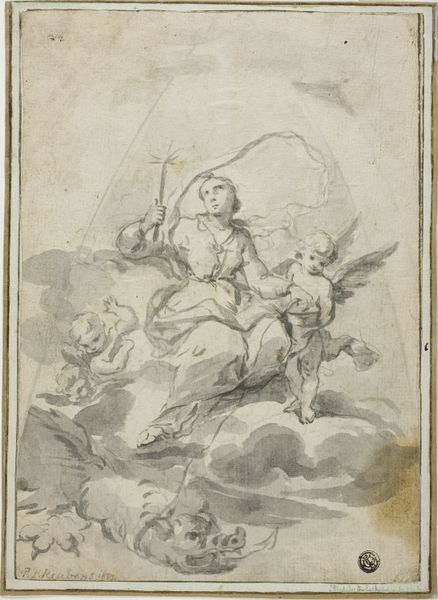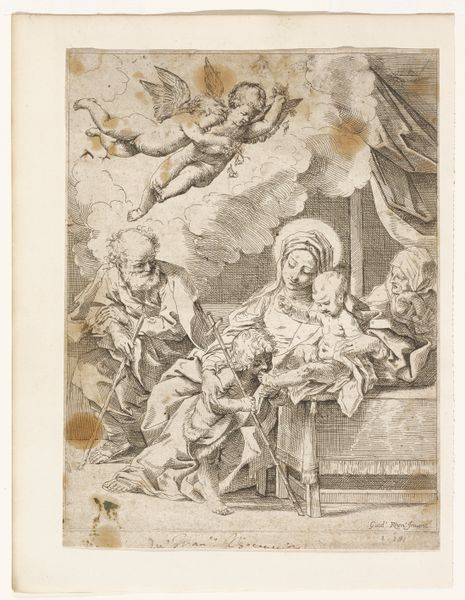
drawing, ink, pen
#
drawing
#
baroque
#
landscape
#
figuration
#
ink
#
coloured pencil
#
pen
#
angel
Dimensions: 13 3/4 x 8 11/16 in. (35 x 22 cm)
Copyright: Public Domain
Curator: Giuseppe Zais offers us his rendition of The Annunciation, a pen, ink, and colored pencil drawing dating sometime between 1736 and 1770, presently housed at the Metropolitan Museum of Art. What strikes you about it? Editor: There's an ethereal quality to it. The soft washes of ink, the figures emerging from and dissolving back into the light... it feels very dreamlike. A bit melancholy, almost. Curator: Indeed. The Baroque style, even in this relatively simple drawing, often leaned towards dramatic expression. Consider how this work participates in, or perhaps deviates from, typical depictions of this very charged, and political scene of Mary's annunciation. Editor: Right, and looking at the symbolism, the dove, of course, representing the Holy Spirit, descending with a literal beam of light... that visual metaphor carries immense weight. And the angel, bearing the lily, a symbol of purity and Mary’s virtue, poised on a cloud – these aren't just pretty details; they are the anchors of meaning. Curator: Certainly, these elements, familiar from centuries of artistic interpretations, were instantly legible to its intended audience. This wasn't just aesthetic enjoyment; it was a reinforcement of cultural narratives and doctrines, communicated through universally understood imagery. Editor: The positioning of the angel seems unusual; one might consider him to be offering, or even pushing, the Holy Spirit’s light towards Mary. It creates an intensity – almost a coercion – in the image that isn't always as pronounced in other depictions. What does this say of the church's attitude during Zais's cultural context? Curator: That's astute. It speaks to the complex and often forceful role the church played in people’s lives, and indeed in political circles. The Annunciation wasn't merely a devotional image; it was a statement of power, translated through the language of art. Editor: And it’s that power that resonates even now, however subtly. Beyond the purely religious meaning, we can appreciate the intricate language of symbols. A silent vocabulary shared through ages. Curator: Absolutely. Zais has provided us not only an exercise in devout image making, but has made the historical context legible through his visual and artistic choices.
Comments
No comments
Be the first to comment and join the conversation on the ultimate creative platform.
